Cleaning sewer pipes: current methods and features of their
In this article we will talk about how to clean the sewer pipes in the apartment with their own hands, and in addition, we list the most popular ways of punching blockages.
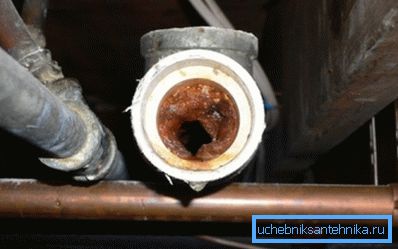
Reasons for cleaning
Many people know what a sewer pipe cleaning is. As a rule, you come across such a need when you least expect it.
Among the causes of sewage obstruction can be noted the consequences of improper operation of the system and natural causes, which can be caused both by long-term operation and the structural features of the sewer system.
As for improper operation, everything seems to be clear here, garbage and various objects that are too large to pass through the hole of pipes enter the system. With natural causes, things are much more complicated, because there are many of them.
Among the natural causes of blockage, we note the following:
- Lack of regular cleaning and, as a result, long-term accumulation of pollution;
- Incorrectly calculated slope or incorrectly chosen pipe section;
- The presence of a large number of turns of pipes with small and small diameter cross-section;
- The presence of turns made at right angles;
- Relief defects of the inner walls of pipes and, as a result, accumulation of pollution;
- Poorly regulated drain tank and, as a result, lack of flush water, which does not drive sewage out of the toilet bowl to the required distance.
Prevention methods
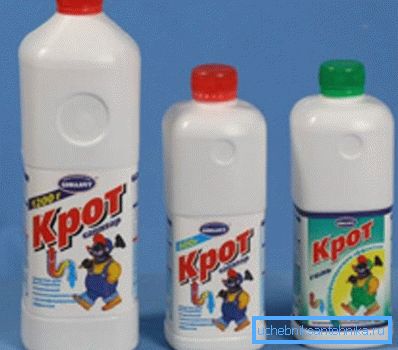
So that the cleaning of plastic sewage pipes does not become an unpleasant surprise, it is necessary to regularly carry out preventive measures:
- First of all, all the shells, regardless of their location, it is advisable to provide bars that will hold various small debris, including hair.
- Get a plunger and use it at least once a month.
- Every month, as a preventive measure, it is necessary to pour liquid-containing means specially designed for punching sewers into the drain.
- At the end of the washing of greasy dirty dishes, skip hot water for 1 minute - this way you can wash off the remnants of grease and other contaminants from the pipe walls.
Determine the location of the blockage
In order to quickly and effectively eliminate the blockage, it is necessary to have an idea of where it is located.
Water flow can be difficult in the following areas:
- in the siphon tank;
- in corrugated plum from siphon to drain;
- in sewer pipes inside the ceiling;
- in the riser.
If a traffic jam appears in the riser, then this is a collective problem and a specialist can be called together to solve it. If the advancement of fluid is difficult to the riser, you can cope with the problem on your own and thus save money, since the cost of calling a specialist is high.
Methods for cleaning
All more or less effective methods of cleaning pipes can be divided into four categories:
- mechanical;
- using chemicals;
- hydrodynamic;
- thermal.
Let us consider the listed methods in more detail.
Mechanical cleaning
- Manual method using a cable
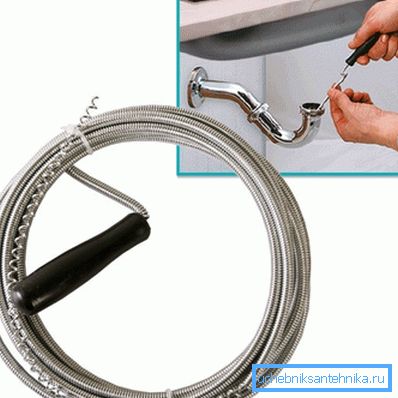
The use of plumbing cable is relevant when the blockage is caused by accumulations of solid deposits or when foreign objects stuck in the pipe are not dissolved by chemical means.
The plumbing cable is made of twisted tough steel wire. A metal drop can be attached to the end of the cable to pass through a small gap in the tube. Some cables may end in a ruff or crochet, which is convenient to hook and pull hard objects.
Cleaning with a cable is performed in rigid pipes, so you must first remove the corrugation or flexible hoses from the drain.
The end of the cable is gradually lowered into the tube and at the same time scrolls. If you feel that the cable is buried in a rigid barrier, turn it a few turns counterclockwise. Then you can continue rotating and pushing through.
- Manual method using the plunger
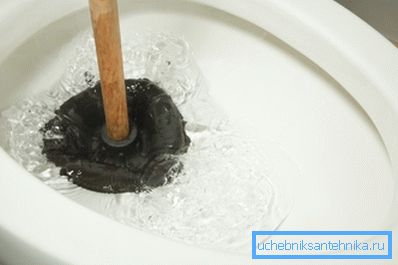
The use of a plunger is another popular mechanical method for clearing a blockage in a sewer. The device can be used not directly on the drain pipes, but in the toilet or bathroom, where there is a plane around the hole that is larger than the diameter of the plunger.
The plunger is installed above the drain, after which the handle on the handle is pressed from above. As a result, an overpressure is created in the pipe, and the tube is pushed further along the pipe or completely destroyed. The use of a plunger for greater efficiency is advisable to use in combination with chemical agents.
Chemical cleaning
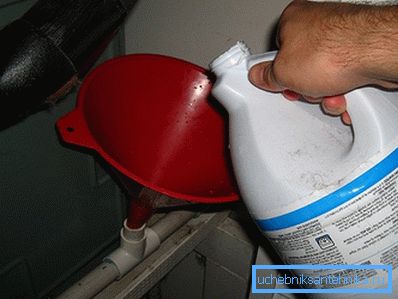
You can clean the sewer pipe, provided it is contaminated with particles of organic origin, using special chemicals. Special tools can be made on the basis of acids or alkalis.
Alkaline preparations are more versatile, as they can be applied when working with a wide range of contaminants. Acidic remedies are generally used to destroy fat plugs.
In addition to acids or alkalis, the composition of cleaning products includes a number of surfactants that interfere with the adhesion of contaminants to the pipe and break down the sediment on its walls.
Important: Cleaning solutions containing acids are potentially harmful to cast iron sewage pipes.
Hydrodynamic cleaning
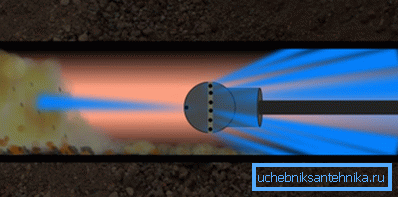
Instructions for applying the hydrodynamic method requires special equipment. Cleaning can be carried out on various pipes of any diameter.
The technology is universally applied to clean standpipes. Hydrodynamic cleaning is performed by qualified specialists, since the selection of a suitable pressure is individual for each individual type of pipe.
During cleaning, a hose is pushed into the pipe with a nozzle through which water is supplied with a pressure of up to 300 atmospheres. A jet of water destroys the resulting blockage, and also removes accumulations of dirt from the pipe walls. The versatility of the method due to the possibility of pressure control and the use of nozzles corresponding to the diameter of the pipe.
Heat treatment
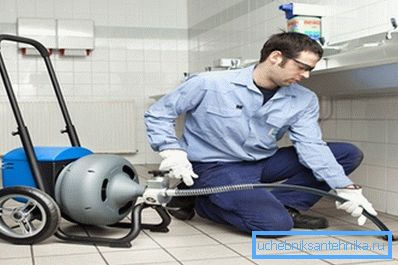
This is another method that is performed by qualified specialists. Thermal cleaning is a combined effect on a contaminated area through high temperature and water pressure.
During the cleaning process, water heated to + 120 ° С is fed into the sewer system under high pressure. As a result, the pressure quickly breaks through the cork, simultaneously removing the pollution from the walls. As with the hydrodynamic cleaning in this case, you will need specialized equipment.
Important: The best option is to use heated water with the addition of antiseptics. Specially prepared water can not only penetrate the blockage, but also disinfect pipes, thus eliminating the majority of unpleasant odors.
Conclusion
Now you know what methods of cleaning sewer pipelines today apply. Moreover, we looked at how to clean up the pollution with your own hands.
You will find more useful information by watching the video in this article.